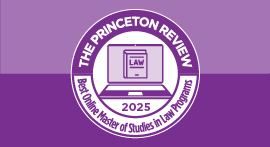Your success in law school is the first and most important factor in your success as a lawyer.
There are three types of 35-minute multiple-choice sections on the LSAT: Reading Comprehension, Analytical Reasoning, and Logical Reasoning. Each set has its own unique question formats, which means that you must adapt your strategy to each section. Here are five tips that will help you more efficiently make your way through the Reading Comprehension section.

1. Rank passages easiest to hardest
On the LSAT, every correct question is worth one point, so maximize your score by starting with the easier passages and leaving the difficult ones for last (or skipping them entirely—you don’t need to attempt all four passages to get a good score).
When you start the section, take 1–2 minutes to skim both the first few lines of each passage and the accompanying questions. Easier passages tend to have familiar, concrete vocabulary; short, simple sentences; and brief, straightforward question tasks and answer choices. Harder passages tend to have unfamiliar, abstract vocabulary; long, complex sentences; and lengthy, complicated question tasks and answer choices.
Ranking passages is more an art than a science, so you’ll want to practice this ordering.
2. Identify overall purpose
The LSAT rewards pattern recognition, so look for similarities in how passages are structured, which is related to the author’s purpose. Ask yourself why the author wrote the passage: aAre they trying to correct a misconception? Criticize someone or something? Defend someone or something against critics? Compare and contrast possible solutions to a problem?
Focusing on what the author is trying to do can help you to understand the main points and overall structure of the passage.
Read More: Find Your Law School
3. Prioritize big claims
You don’t have time to memorize all the details in a passage, nor do you need to: you will not be tested on every detail. You can always return to the passage to re-read the relevant information when necessary.
You should read the passage quickly so that you can spend most of your time on the questions. Aim to read the passage in about 3-–4 minutes and focus on finding the main point of each paragraph and the author’s overall thesis.
Actively read the passage by highlighting text that refers to its logical structure. Stay focused by asking yourself what big claim is made in each paragraph, how that claim relates to what you’ve already read, and where you think the passage is headed next.
4. Prove it
Most question tasks require you to find support in the passage, so make it a habit to use key words and passage references in the question stem and answer choices to narrow down what to re-read in the passage. Carefully compare the relevant information to the question task and the answer choices. The test writers know that you’re pressed for time, so they include attractive wrong answers that you’ll be tempted by if you rely on memory rather than the passage.
5. Use the Process of Elimination
Finding passage support is one key to improving your reading comprehension score, but so is increasing your ability to quickly recognize and eliminate common types of wrong answers.
Use a two-pass approach to the answer choices, moving quickly on the first pass to eliminate the junk, and slowing down on the second pass to carefully compare the remaining answer choices to the passage, the question task, and each other. Common types of wrong answers:
-
New or unsupported information
-
Extreme language (e.g., most, all, only, must, never)
-
Contradictory to the passage
Every word in the answer choice matters, so watch out for those that are mostly right: partly wrong means completely wrong! Focus on finding good reasons to eliminate wrong answers.
Practice for the LSAT
Take a LSAT practice test with us under the same conditions as the real thing. You'll get a personalized score report highlighting your strengths and areas of improvement.
Explore Graduate Programs for You
Explore our featured graduate schools & programs to find those that both match your interests and are looking for students like you.
Best Online JD Programs
Online JD programs offer flexibility, affordability, access to innovative technologies, students from a diversity of career backgrounds, and global opportunities.
Best Online MSL Programs
Master of Studies in Law (MSL) programs are for non-lawyers whose careers in their organizations will benefit from legal training even though they are not required to be practicing attorneys.

Find MBA Programs Matched to Your Interests
Explore our featured business schools to find those that are looking for students like you.


